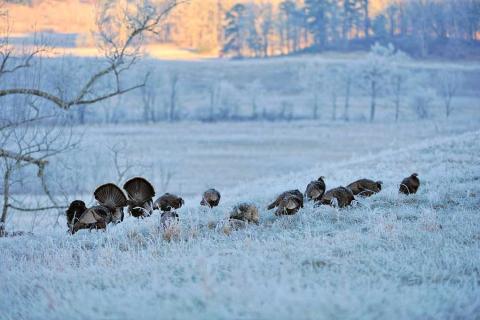Phillip Gentry
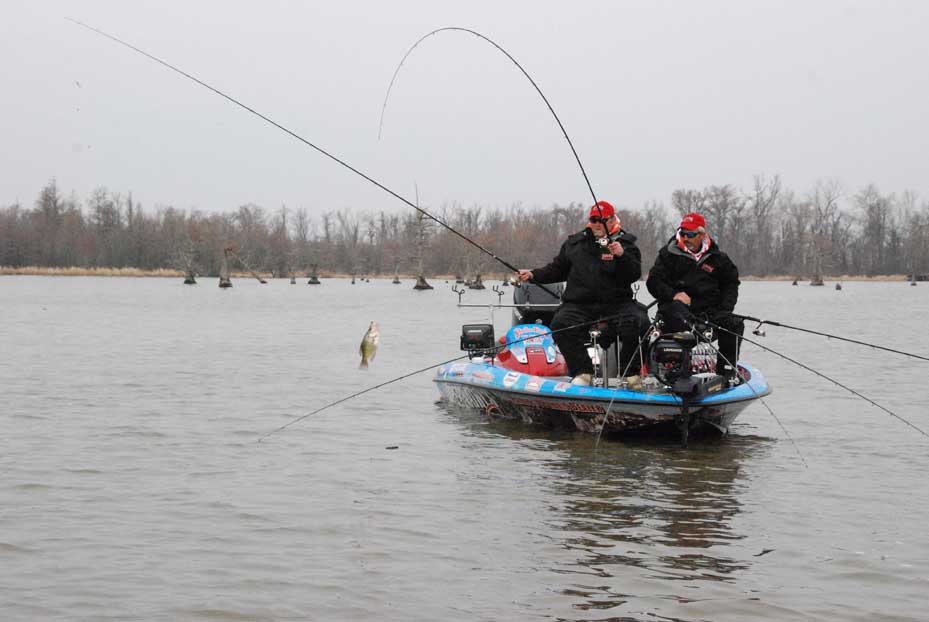
For areas whose waters don’t freeze over during the winter, January and February can be one of the best times of the year to seek out crappie, particularly if your goal is slab sized fish. One of the advantages of winter crappie fishing is that these tasty panfish have a distinguishably higher metabolism than other species, which means they are more active and more prone to feed.
While they may not be as active now as they will be in a couple months, crappie consistently feed through the winter in order to build fat and energy reserves that will be used to fuel the spring spawn.
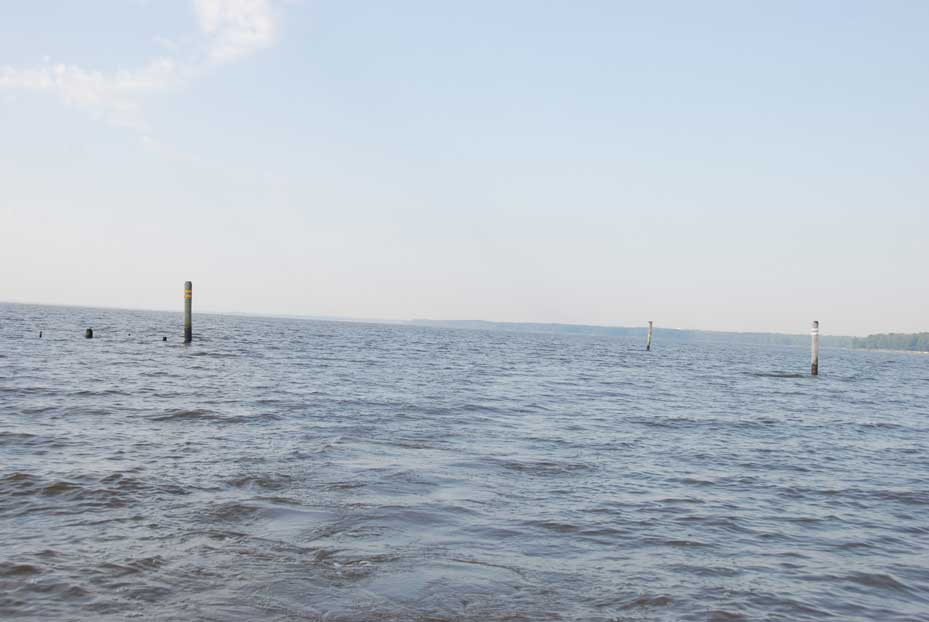
IS YOUR LAKE SUITABLE FOR CRAPPIE?
While anglers can always find some crappie holding and relating tight to cover this time of year, the majority of fish leave their winter haunts for long stretches of time to pursue baitfish away from cover. It’s for this reason that crappie can be found both holding high above deep-water cover or suspended out in open water in the presence of large schools of baitfish.
Winter is typically also the time when crappie migrate out of tributary creeks and hold in the mouth of the tributary or in the main lake itself. In those waters that are subject to winter drawdowns in preparation for spring flood control, crappie may leave tributaries altogether and move into the main lake basin out in front of the dam or other impoundment structure.
The best strategies for winter crappie fishing involve a slower, more finesse presentation to fish, which can be lethargic when they are not actively feeding. Probably the most popular tactic to catch winter crappie is slow, vertical trolling, sometimes referred to as spider rigging.
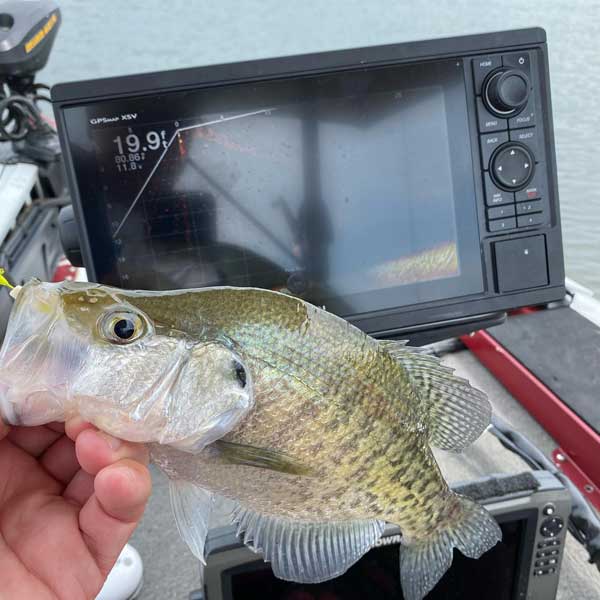
When spider rigging for crappie in open water, it’s important to use light line and sensitive rods. At this time of year, crappie tend to simply suck in a bait and may not move more than a foot or two to do so. An angler who does not recognize the subtle twitch of the rod may miss the fish altogether as it inhales the bait, then abruptly spits it out.
It’s also wise to use as light a weight on your spider rigs as possible to keep crappie from feeling any resistance when they take the bait.
Suspended crappie are frequently much shallower in the water column than many anglers recognize. In stained water on a bright sunshine day, crappie may only be a foot or so below the surface, utilizing the sun’s rays to absorb heat. Fish that hold extremely shallow over deep water are harder to detect on sonar and may only appear at depths of 5 or more feet when the wake or shadow of the boat flushes them from the surface.
A common occurrence is for crappie to hold extremely shallow over the tops of break lines in the main body of the impoundment. These break lines may be the main channel of the reservoir or the channel edges of a large tributary or other indentation in the bottom that offer significant depth changes. Crappie use these break lines and indentations as a roadmap for migrating out into the main lake and them back into the tributaries once the pre-spawning run begins.
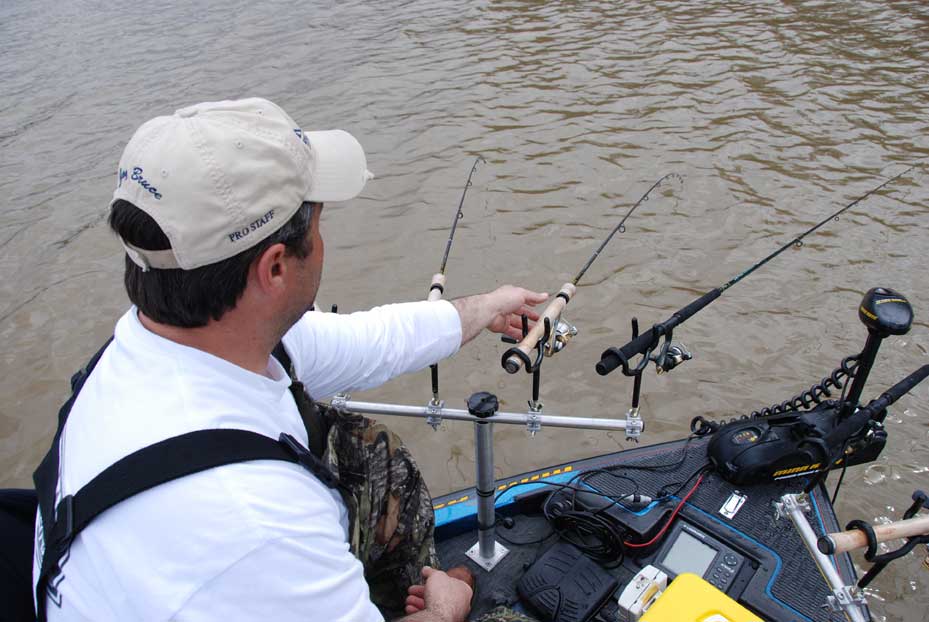
CRAPPIE FISHING TIPS WITH REAL TIME FORWARD FACING SONAR
Another interesting habit of winter crappie, particularly in clear water lakes, is the tendency to relate directly on the bottom of the lake, especially those with soft mud, clay, or silt bottoms. Anglers frequently report catching winter crappie with muddy bellies and fins. The thought process behind this is the fish are absorbing the slightly warmer temperatures present in the lake bottom.
Another popular tactic for catching winter crappie is single pole jigging, pitching, or casting to suspended fish using forward-facing real time sonar to identify and target crappie. Once the angler identifies a fish that is a crappie, or even a school of crappies since the fish tend to group tightly together in the winter, a bait is lowered, pitched, or cast out in front of the fish and slowly retrieved at or just above the fish’s level.
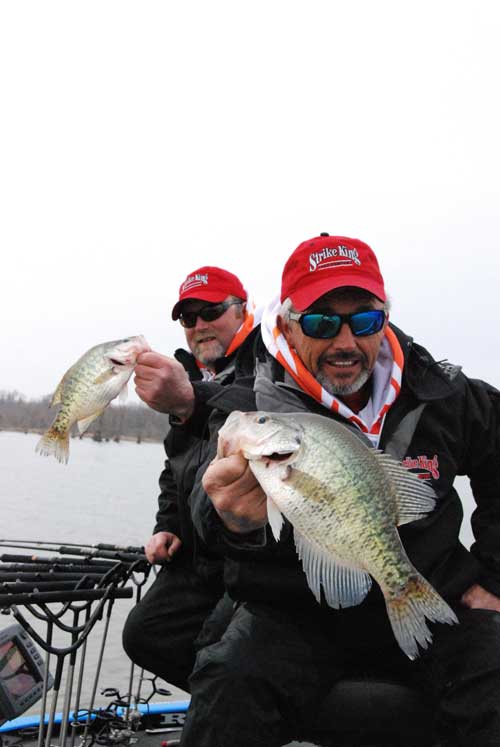
Different variations in retrieve, presentation, bait color, profile or action are often the key to eliciting strikes. One factor that all of these elements have in common is smaller size. Even white crappie, which typically favor larger baits than black crappie, will shun a 3” – 4” bait and inhale a 1” – 2” bait in cold water.
Many anglers also start fishing with small crappie jigs of plastic or natural hair composition and will then add either a small piece of scented material or tip the jig with a live minnow to tempt cold water crappie. If those combinations fail, then switching to straight live bait only, again in smaller sizes, may be the key to eliciting strikes.

















